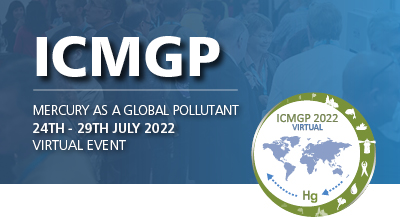| Abstract Title: | Increased Potential for Mercury Methylation Along a Bog to Fen Trophic Gradient in Sub-Arctic Peatlands |
| Presenter Name: | Spencer Roth |
| Company/Institution: | Oak Ridge National Laboratory |
| Session: | Special Session - Meta-omic and geochemical approaches to linking microbial activity to biogeochemical mercury cycling |
| Day and Session: | Friday 29th July - Session One |
| Start Time: | 06:00 UTC |
| Co-Authors: | Spencer Roth,Brett Poulin,David Krabbenhoft,Jeffra Schaefer,Mark Hines,Tamar Barkay |
Abstract Information :
The neurotoxic compound methylmercury (MeHg) is formed through the metabolic activity of anaerobic bacteria and archaea. High-latitude wetlands have long been recognized as locations of elevated MeHg, and wetland trophic status has been identified as an important factor impacting rates of MeHg production. Because permafrost melt alters wetland trophic status and releases Hg into the active layer, it is critically important to understand the factors leading to high MeHg production in northern wetlands. Here, we utilized peatlands with a gradient in ambient MeHg concentrations to investigate how microbial community composition and metabolic potentials impact MeHg production. The peatland sites ranged from ombrotrophic bogs with low %MeHg (1.9%) in porewater to minerotrophic fens with high %MeHg (40%), consistent with higher methylation rates in the latter. Wetland trophic status was a significant factor explaining differences between the site functional microbiomes. The relative abundance and diversity of metagenome assembled genomes (MAGs) containing hgcA homologues were significantly different (Kruskal-Wallis p < 0.001) between wetland trophic groups with rich fens having the highest diversity and genetic potential for Hg methylation. Pore water sulfate was identified as an important factor explaining microbial community differences between poor fens and rich fens and was significantly correlated to %MeHg in fens (p < 0.001). Correspondingly, highest abundances of hgcA+ MAGs phylogenetically or metabolically annotated as sulfate-reducing bacteria and syntrophs (p < 0.01) were found in rich fens. Finally, our observations were replicated in publicly available metagenomes from diverse wetlands of the Stordalen Mire in Sweden. Collectively, our results suggest that climate change-induced shifts in wetland trophic status may promote MeHg production by supporting robust and diverse Hg methylating communities. The importance of our conclusions is heightened due to the high connectivity of northern wetlands with Arctic and sub-Arctic aquatic food webs where MeHg poses a public health threat.



